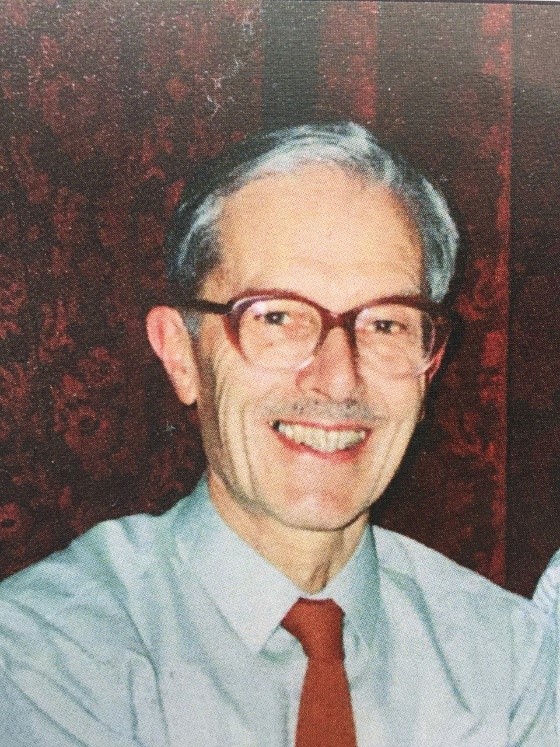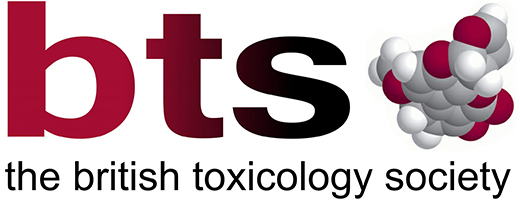
Obituary for Dr Martin Johnson
Dr Martin Keith Johnson 1930-2018
Martin Johnson died in Banstead, Surrey on the 9th November 2018 after 2 years in a nursing home, aged 87. Martin was a founder member of the British Toxicology Society, member of the Executive Committee (1984-1990; 1991-1994) and its vice-chairman (1988-1990). Martin was also a member of the Scientific sub-committee (1987-1990) and chairman of this sub-committee (1988-1990). In these formative years he played an important role in helping establishing the Society which is now large and thriving. With regard to scientific achievements, Martin Johnson is best known for his major contribution to the understanding and prediction of the hazard of organophosphorus-induced delayed neuropathy by a series of elegant, mechanistic investigations. His work did much to elevate the scientific status of mechanistic toxicology. Martin was one of most thoroughly honest and scrupulous individuals in the world of toxicology. He was unyielding in his rigour to understand the basic truth of the scientific problem he investigated. He was not always ‘politically correct’nor did he court popularity. He was not afraid to say what he thought and those of us who have worked with him and known him for many years developed a genuine affection for the man. He was incapable of behaving with anything other than integrity and honesty in both his scientific work and in his personal dealings with the many people with whom he worked and trained over so many productive years. Martin was awarded the John Barnes lecture, the highest accolade of the British Toxicology Society, in 1997.
Martin Johnson attended the County Grammar School in Wallington, Surrey and was awarded a scholarship to Imperial College, London, where he graduated with a degree in Chemistry in 1952. This was followed by 2 years National Service with a commission in the Royal Army Service Corps. He then worked for British Oxygen Chemicals Ltd in London as a Research Chemist, studying the synthesis and polymerization of chemicals derived from acetylene, both in the laboratory and at a semi-technical scale. In 1957 Martin joined the UK Medical Research Council Toxicology Unit, based at Carshalton in Surrey, as a biochemist in the Biochemical Mechanisms Group run by Dr Norman Aldridge. In these early years he worked on the subcellular fraction of rat-brain homogenates, identifying various markers in subcellular fractions. Of note among the 5 papers he published in this area was one in the journal Nature in 1962 entitled, ‘Treatment of sub-cellular particles prior to assay of the enzymatic marker, succinic dehydrogenase’. Martin then started work for his PhD studying the interaction of some aliphatic compounds on rat liver glutathione levels, which led him into studying the glutathione S-alkyltransferase’s of the rat, which was the major focus of his thesis. I remember Martin being rather concerned when he discovered his external examiner was Professor Eric Boyland, who at that time was a leader in the field of glutathione S-transferase, and who had a reputation of being a very challenging examiner! However, as we all anticipated, Martin did very well and was awarded a London University external PhD in Biochemistry in 1965. One of the things I remember about Martin was his ability to doze off during the regular 4pm lecture at Carshalton; however, he nearly always managed to ask an interesting question during the discussion.
After finishing his PhD, Martin embarked on the project for which he is most celebrated: the target for organophosphorus-induced delayed neuropathy. The Toxicology Unit’s research into organophosphorus compounds (OP) began at its inception. OP’s had been developed during World War-2 as nerve agents and subsequently were manufactured for agricultural use as insecticides. The intended target for this type of OP was acetylcholinesterase (AChE). Irreversible AChE inhibition led to accumulation of acetylcholine at nicotinic and muscarinic synapses with acute, intentionally fatal, toxicity. In 1953, several workers engaged in the manufacture of a new OP insecticide, mipafox, suffered a delayed neuropathic paralysis. An investigation at the Unit into this distinct form of OP-induced toxicity concluded that the target enzyme was different from AChE. Research into OP-induced delayed neuropathy had its roots in the 1930 National Institute of Health investigation into the massive US poisoning epidemic caused by ingestion of tri-ortho-cresyl phosphate (TOCP). The pathology of this syndrome, experimentally induced by TOCP in chickens, was characterized by distal degeneration of the longest axons in the spinal cord and peripheral nerves.
With increasing manufacture of new insecticidal OP’s in the 1960s, Norman Aldridge suggested that Martin should re-open the Unit’s search for the target of OP-induced neuropathy. In 1969 Martin published two seminal papers that presented an operational definition of neuropathy target esterase (NTE) as an enzyme activity, inhibited by low concentrations of the neuropathic OP, mipafox, but resistant to an AChE-directed OP, paraoxon. Based on this definition, a simple colorimetric assay using chicken brain homogenates and an artificial substrate, phenyl valerate, provided a rapid in vitro and ex-vivo screen for neuropathic potential in novel OP’s, and became used world-wide for this purpose. In an extension to this work, Martin synthesized and collected scores of OP’s and established structure-activity relationships for NTE inhibition. OP’s potent against NTE had larger and more hydrophobic structures than AChE inhibitors. Not only did this information guide the manufacture of insecticidal OP’s with reduced neuropathic potential, but also it hinted that the natural substrate for NTE would be larger and more hydrophobic than acetylcholine.
In the early 1980s, work in Martin’s laboratory established that NTE was a large 155kDa polypeptide. Attempts to isolate this polypeptide continued over 10 years with frustratingly little progress. Eventually, this problem too was solved by Martin’s skill as a synthetic chemist. Inspired by a suggestion from Rudy Richardson (a US visitor to Martin’s laboratory in the 1970’s), Martin generated a remarkable bi-functional OP, dubbed S9B: one moiety (structurally similar to the active metabolite of TOCP) reacted specifically with the catalytic serine residue of NTE; the second moiety was a biotin molecule that allowed the NTE-S9B adduct to be captured on avidin-Sepharose. By this means NTE was isolated from chicken brain microsomes in a single-step procedure.
The isolation of NTE coincided with the Unit’s relocation from Carshalton to the University of Leicester. Martin, now semi-retired, continued to take a keen interest in the project. The isolation of NTE allowed workers at the Unit to clone its cDNA, and this allowed investigations that uncovered its biochemical and physiological functions. NTE is now known to play a central role in phospholipid homeostasis in most eukaryotic cells, and this activity is essential, before birth for placenta formation, and in adulthood for maintenance of spinal cord axons. Rare human diseases caused by recessive mutations in the NTE gene have been documented. All of these advances are ultimately dependent on Martin’s pioneering work. While Neuropathy Target Esterase remains a niche research area (a PubMed search still returns less than 600 publications), Martin’s papers on the discovery (1969) and assay (1977) of NTE have received more than 300 and 400 citations, respectively. Rarely in biochemical research, has an enzyme been more closely associated with one person.
During his career Martin published a large number of papers in ’good scientific journals’, trained two PhD students and one MPhil student. A total of 11 international scientists came to work in his laboratory between 1982 and 1993 from USA, Belgium, Italy, Spain, Yugoslavia, Israel and China, while over 30 different scientists from around the world came to learn the neurotoxicity test system in his laboratory. Needless to say, Martin was in demand to present his work at many national and international conferences as well as teaching and advisory activities, and was regularly in demand to referee manuscripts in a wide range of Toxicology Journals. Martin was also a member of EUROTOX where he served on the Executive Committee from 1990-1998.
Martin was Director of the World Health Organization collaborating laboratory for the assessment of mammalian toxicity of pesticides at Carshalton from 1986 until 1993. He also drafted, revised and acted as rapporteur for the final revision (1986) of Environmental Health Criteria document No 63, ‘Organophosphorus Insecticides’, and was a member of the task group for the Carbamate Pesticides document in the same series. In 1988 he became leader of the Neurotoxicity Group and retired from the Unit in 1993.
Following his retirement Martin worked for a time as an independent Toxicology Consultant. He also worked on a number of community projects, including volunteering at the Royal Alfred Seafarers Society retirement home, and fighting to support local bus routes.
Martin’s Christian faith was central to his life and saw him thoroughly involved in his local church for over 70 years, serving as Deacon, then Elder at Banstead Baptist Church for over 30 years, and subsequently as an Elder at Banstead Community Church, where his characteristic integrity and wisdom were highly valued. After stepping down from eldership, he remained active in the Church, particularly supporting and mentoring some of the young men and students, a personal passion of his from his teenage years as a Crusader leader.
His long-standing interest and support of missionary work continued after retirement, and took him to Bolivia with the charity ‘Latin Link’, helping with a project to build homes for retired pastors. His love of motorbikes, classical music – whether live concerts or Classic fm – and exploring the English countryside were well-known. He loved walking in the woods and along coastal paths whenever he had the chance.
Martin and his wife Pamela shared 60 years together. He is survived by her, their three daughters: Maggy, Gill and Jenny, and 10 grandchildren.
Ted Lock, Andrew Smith and Paul Glynn

